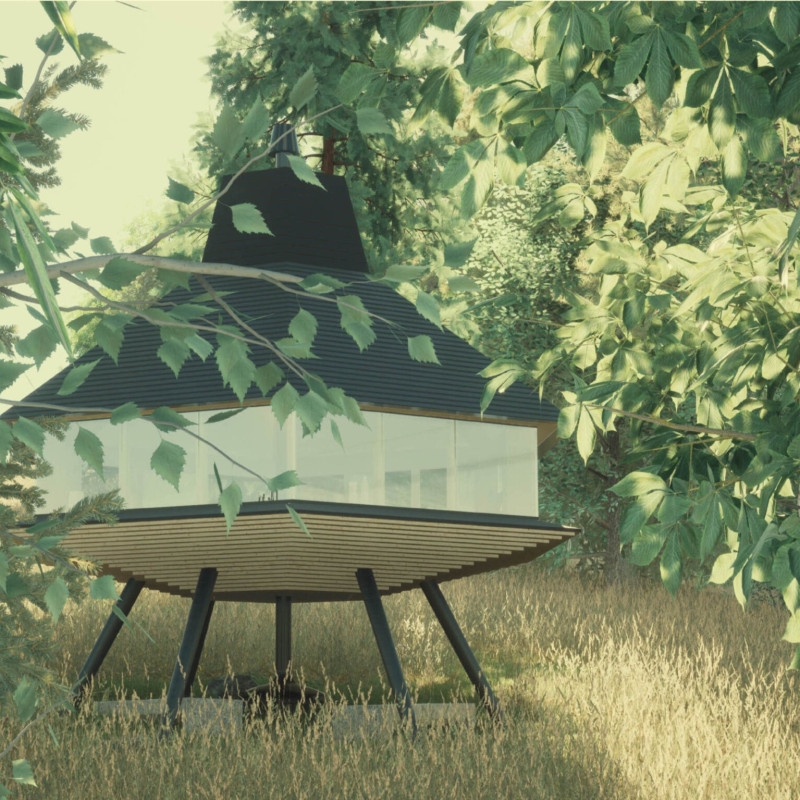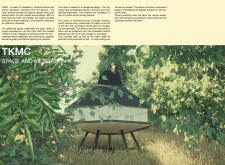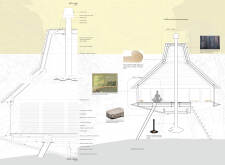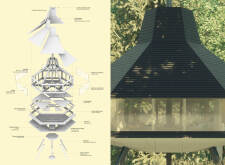5 key facts about this project
The TKMC (Space and Meditation Cabin) project is an architectural design that focuses on creating a harmonious space for meditation and community interaction. Situated in a natural landscape, the cabin incorporates a hexagonal form that enhances both the aesthetic and functional aspects of the structure. The project aims to foster mindfulness and social bonding among users, making it a versatile facility for personal and collective practice.
The primary function of the TKMC cabin is to serve as a dedicated space for meditation and quiet reflection. The hexagonal configuration invites users to arrange seating in a circular manner, promoting a shared experience that deepens the focus on mindfulness. Elevating the cabin three meters above the ground not only provides an optimal viewpoint of the surrounding environment but also emphasizes the thematic elements of ascent and elevation associated with meditation.
Key elements of the design include a concrete slab foundation, wooden structures, a steel frame for stability, and numerous glass panels that permit natural light to flood the interior. Folding doors and external ladders add to the functional versatility of the structure, ensuring ease of access and adaptability to various activities. The integration of a chimney introduces warmth and an elemental focal point for gatherings, further enhancing the communal aspect of the design.
The project distinguishes itself through its holistic approach to material selection and environmental integration. Local materials such as light wood and double-glazed glass are utilized to minimize environmental impact while maintaining aesthetic coherence with the surroundings. The elevation of the cabin and the choice of materials reflect a conscious effort to blend with the natural landscape, ensuring that construction practices promote ecological sustainability.
Architectural designs within the TKMC exhibit an acute awareness of both function and form. The low window layout is specifically designed to moderate light entry, creating an atmosphere conducive to meditation. Additionally, the use of an insulated structure contributes to energy efficiency, allowing for year-round utility. The project not only addresses the need for a retreat but also acts as a venue for fostering community and connection in a mindful environment.
For further exploration of the TKMC project, including architectural plans and sections, readers are encouraged to delve deeper into its architectural designs and ideas. This will provide a more comprehensive understanding of the unique elements that drive the project's vision and execution.





















































